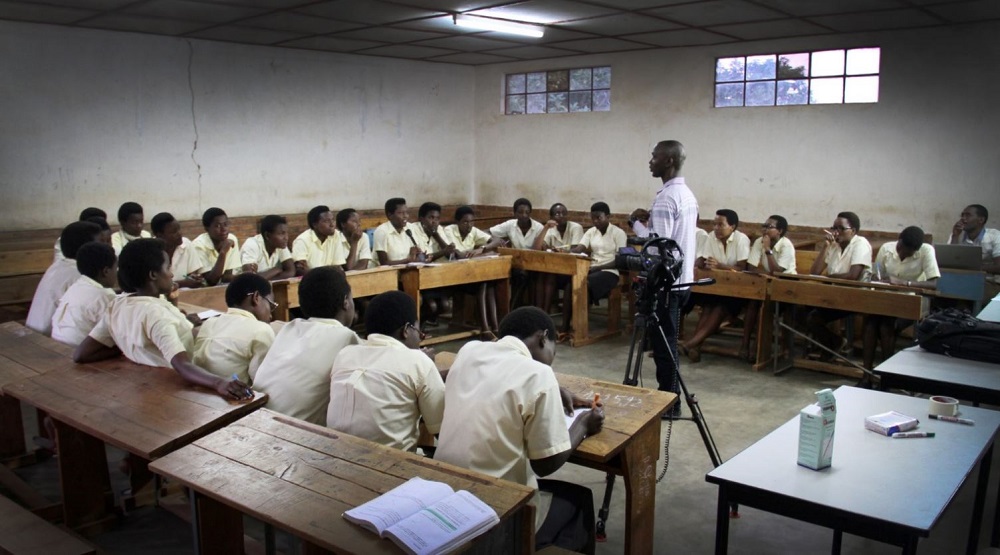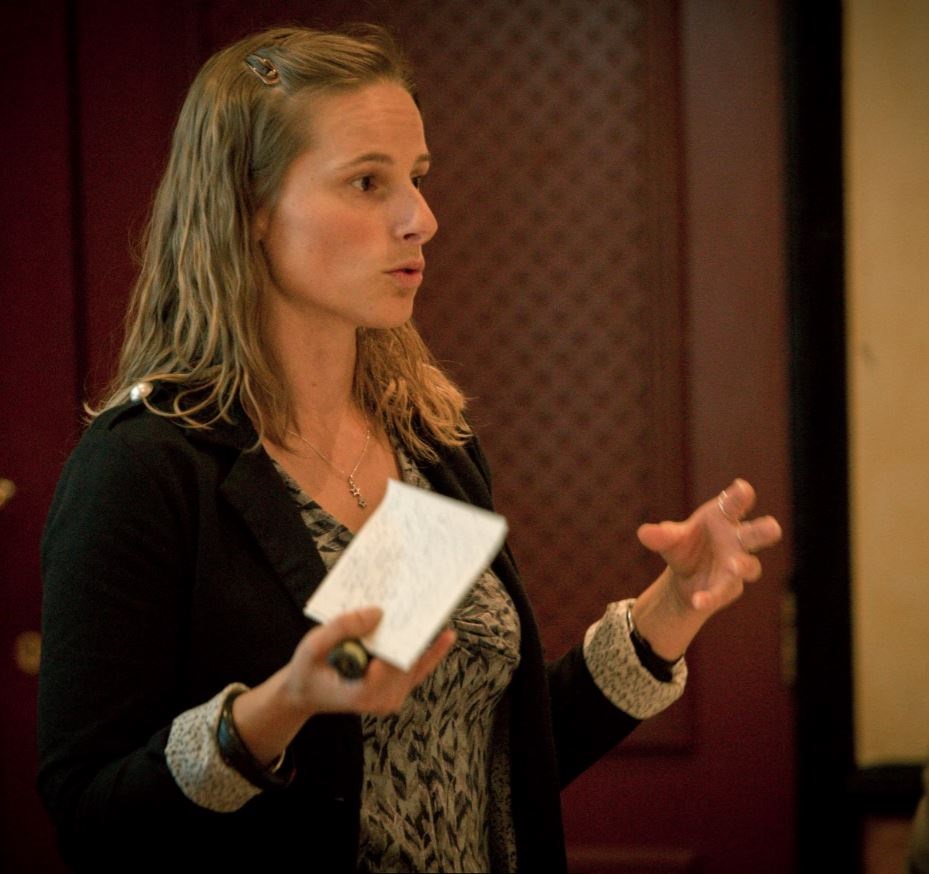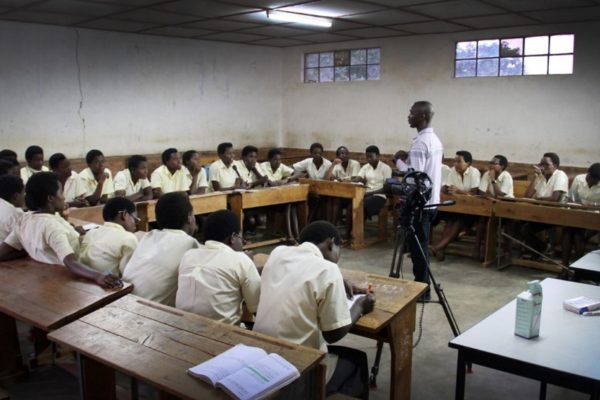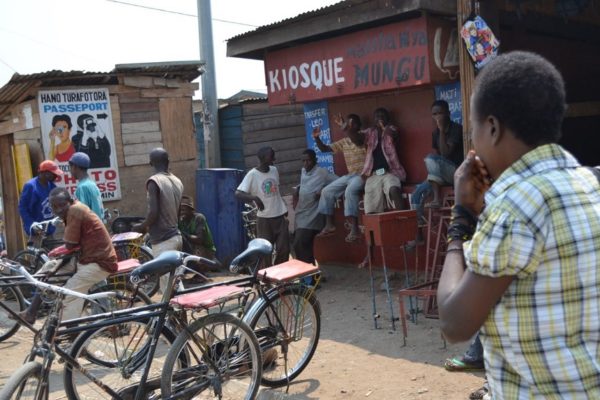All Hands on Deck for Peace Education in the Great Lakes Region

In this interview, Interpeace’s Great Lakes Programme Coordinator, Isabelle Peter, discusses the organization’s peace education initiative in the three countries of Rwanda, Burundi and the eastern Democratic Republic of Congo (DRC). The peace education initiative is part of Interpeace’s Cross-Border Peacebuilding programme, implemented in collaboration with six regional organisations in the region.
What is Peace Education, and how does it fit into Interpeace’s efforts to build lasting peace in the Great Lakes region?
Peace education is both about content and approach. It focuses on learning about and strengthening the skills, attitudes, principles and values that individuals and communities can rely on to transform negative situations of potential conflict into more positive situations. In terms of what constitutes peace education in the context of the Great Lakes region, it is a concept that looks at the fundamental causes and structures that underlie the continuous conflicts that the region has experienced.
Interpeace’s work on peace education was in response to a call by the people of the region themselves, who identified peace education as an important foundation for lasting peace. This emerged as a recommendation in a participatory research carried out by Interpeace’s regional peacebuilding programme, which we implement together with six partner organizations in Rwanda, Burundi and the Democratic Republic of Congo (DRC). The mandate itself was given at a regional forum in Kinshasa in December 2015. In the face of repetitive conflicts that have occurred for the last 20 years or more, citizens from the region − among them youth, religious leaders, parliamentarians, ministers, regional organizations and women’s groups − came together in Kinshasa and clearly stated that peace education was absolutely necessary for the region to stand a chance at sustainable peace in the future. This shows how the people of the Great Lakes, in their own analysis, deeply understand the essence of peace education as a building block for lasting peace.
In the framework of Interpeace’s Great Lakes programme, the youth emerge as a key actor, historically instrumentalized by certain groups to fight for or to assert certain vested interests, and often also manipulated to commit acts of violence. What people in the region have said is that the youth can be that transformative force that can change the future of the region. We therefore mainly target to transform the youth since they are well positioned to shape a better future for the region. Although the focus is on the youth, peace education is more broadly about transforming people, shaping the attitudes and behaviour of individuals such that when faced with situations of potential conflict, they can transform these into situations that actually support peace and social cohesion.
Peace education, with a particular emphasis on the youth, is then a very important approach that can support this positive role that the youth can play.

Interpeace's Great Lakes Programme Coordinator Isabelle Peter. Photo Credit: Interpeace.
It has often been remarked that “Peace Education does not happen in a classroom.” What does this statement signify in the context of the Great Lakes Region?
That is a very important statement, but it is also a challenge that we have encountered in the programme. All the stakeholders we have interacted with in the region − among them policy makers, decision makers, teachers and education systems − are trying to find a way to make peace education more practical. This matter came up when we had a regional peace education summit in Nairobi in March 2016, with about 80 decision makers, policy makers and peace educational practitioners in attendance. What they said is that for peace education to really be effective, it must empower the individual to have the capacity to transform a situation, based on his or her knowledge, skills, behaviour and attitudes in line with the principles of dialogue, tolerance, mutual understanding and active listening.
Let us take the example of a young person in the Great Lakes region, confronted with a situation where he or she is for instance being approached by a politician or by the youth wing of a political party to fight for a certain cause or to carry out some actions that are not helpful for peace. If you place yourself in the shoes of this individual, the question is: how can you transform this situation? How can you react to it in a way that can turn it into something more positive? First of all, you must be able to resist the manipulation, and you also need to see how you can engage your family or your community for them to similarly resist this kind of manipulation. What this means is that peace education needs to be something practical that individuals and communities can use in their daily lives.
One important realization that has emerged from the programme is that the education system needs to integrate a form of peace education that explains what conflict transformation entails and also integrates the history of the region. But more importantly, this needs to be done in a way that really empowers those who undergo peace education to be able to recognize situations of potential conflict and to be able to transform them. I think that when this happens, we will see a new, empowered generation that can really turn around the future of the Great Lakes.
Interpeace has been working with the International Conference on the Great Lakes Region (ICGLR) and UNESCO on peace education for a while now. Have you also been able to reach out to the National Governments? How have they responded?
Yes, we have been able to reach out to the national governments and their response has been generally positive. This is in following with Interpeace’s approach, which seeks to bridge between the grassroots and the decision-making levels. Ever since the peace education emerged as a strong recommendation from the people themselves, we have made effort to upstream this recommendation and we are engaging national and regional decision makers, to provide a viable communication channel between the grassroots and the decision makers.
Incidentally, we have come to realize that all the national governments in the Great Lakes region already have peace education within their policies and programmes. This happened when we organized the peace education summit in Nairobi back in March 2016 in collaboration with the ICGLR and UNESCO. We had high level representatives from the education ministries of Rwanda, Burundi and the DRC, but also from Uganda and South Sudan. In fact, some of these States that we weren’t really targeting, came up and said they too wanted to be part of the peace education initiative. This very fact shows that there is a strong interest in promoting peace education among the various governments. So there is no doubt that the political will exists.
The key challenge that emerged in the Nairobi Summit is that the governments are sometimes short of the expertise required to implement peace education in a meaningful way, not just in the classrooms. For peace education to be indeed more transformative, for instance among the youth, the governments need to have certain tools at their disposal. They for instance need trained educators who know how exactly to implement peace education. Another key priority that was expressed at the Nairobi Summit was the need to harmonize peace education on the regional level. The public statement of the ICGLR Executive Secretary in a regional newspaper article illustrates the priority that peace education has received in the region. In the article, the Executive Secretary expressed his wish to make peace education a priority among ICGLR Member States, and mentioned during the Summit, since his term was coming to an end, that it is an initiative that he will endeavour to pass on to his successor as Executive Secretary.
So generally, we have reached out to national governments, and they have been very open and willing to work on peace education. What needs additional work is how to confront the challenges facing the implementation of the policies and making them reality.
Listening to you it seems that the National Governments have a very pedagogical, curriculum-based approach. Is there a way in which you think they can also reach, for instance, youth who are not in school?
That is a very important point. At the Nairobi Summit, the focus was largely on youth within the school systems. There were however discussions in the Summit on the question of how to reach non-schooling youths. A key actor that the Interpeace programme is working with is the religious denominations − the Christian faith, Islam − because they often have structures in place that allow them to reach wider demographics, including non-schooling youths. These non-schooling youths are a very important demographic because they are more prone to manipulation due to their precarious conditions. Peace education of course goes beyond just the schooling system. That is why our work with the churches, mosques and other similar actors is important in reaching these youths who exist on the periphery.

Photo credit: CENAP
How about the local communities? Are they directly involved in the peace education initiative?
We work very closely with the local communities in the programme, which helps us make a distinction between formal and informal peace education. Formal peace education is more of the school curriculum-oriented kind, while informal peace education is the kind that can take place outside of these formal systems. Our six partner organizations particularly work very much with the local communities in terms of promoting peace education, itself a recommendation that we got informally from the grassroots populations.
One dimension of our work with the communities includes supporting cross-border dialogue spaces, which we do in collaboration with our six partner teams. We currently have six dialogues spaces across Rwanda, Burundi and the DRC, each comprising 20 to 30 community members, among them leaders who represent different communities and socio-political constituencies. We work with these cross-border community dialogue groups to come up with and implement initiatives that foster peace education. They have taken on a number of initiatives, sometimes also involving educators, to discuss the kind of values, principles and mindsets that are important in order to build lasting peace in the region. Participants in the dialogue spaces have gone further and reached out to their own communities, their own families, their own work places and to young people as well.
There is this nice story of a lady from one of our dialogue spaces who has become a sort of “go to” dialogue facilitator in her workplace. Whenever there is a conflict or some kind of tension in the office, her colleagues come to her, and she uses her peacebuilder’s mindset to help them to resolve the conflict through dialogue.
A second dimension is our work with 15 Civil Society Organizations (CSOs) in the three countries to amplify the peace education initiative. Our partner teams engage these CSOs to collaboratively develop concrete initiatives, again aimed at increasing the outreach of our peacebuilding values and the peace education initiative. Some of the activities have included trainings with the CSOs, equipping them to in turn train their own members. We also work with Scouts associations from Rwanda, Burundi and the DRC, and employ tools such as participatory theatre and video sketches to raise awareness and to transform the people we interact with into agents of change in the region.
All this work is quite profound. But then, in what unique ways would you say Interpeace’s approach to peace education is different from that of other actors and stakeholders in the Great Lakes region?
One thing is that we acknowledge the complexity of the regional reality, and we also recognize that change is always a result of many different efforts coming together − starting with the communities’ innate capacities to prevent and transform conflicts. This is why we work with peace education actors in both the formal and informal sectors. In the formal sector, we for example collaborate with UNESCO. We also collaborate with other international organizations such as the Aegis Trust, which has carried out very impressive engagements on peace education in Rwanda. In the informal sector we work with the churches and other different associations.
I think what is important is to see how we can all collaborate, to discern the gaps in the work of others that we can complement, and vice versa. So in that sense, we continue to be in communication with these like-minded organizations, and we invite them to our engagements, for example the 2016 regional peace education summit in Nairobi. Similarly, this month (February 2017) we were invited by UNESCO to speak at the SDG4 Regional Forum for Eastern Africa, which was a high level forum organized by UNESCO in Dar es Salaam, Tanzania, on the implementation of the 2030 Education Agenda.
As Interpeace, our comparative or added advantage is that we have structures and networks in place to link the grassroots level to the national and regional levels. For our work in the Great Lakes region, we for instance have formal collaboration with the International Conference on the Great Lakes Region (ICGLR) and the Economic Community of the Great Lakes Countries (CEGPL). These collaborations help us to see how we can foster advocacy for peace education, how we can really have a dialogue that is more inclusive, brings all tracks on board, and allows for an exchange not only between policy makers, peace education practitioners and students within the formal schooling systems, but also the international organizations and other actors and stakeholders who are involved. In all these collaborations, what is most important to us is to catalyze collective action towards fostering and better facilitating the implementation of peace education.
A second important element that Interpeace and its six partners bring is the voice of the people, who clearly articulated the importance of peace education as a recommendation in a research study that involved several thousand grassroots participants. This voice of the people weighs in to boost our collaboration with other stakeholders and to leverage peace education efforts in the region.
I am sure there must be challenges in these efforts to lay a firm foundation for peace education in the region. What are some of them?
The existing challenges came out clearly at regional peace education summit in Nairobi. The main challenge raised by the participants was about the actualization of the peace education policy frameworks into practice. Several elements are needed for effective implementation – adequate expertise is needed, tools are needed, structures are needed, and of course there are funding needs.
These challenges may also be related to the current global political environment in terms of the donor landscape. Donors and the international community want to see rapidly visible peace dividends, understandably because they are accountable to their own parliaments back at home for the funding that they provide. However, the reality is that addressing the root causes of conflicts in the Great Lakes, requires long processes. Peace education is one important pillar in mitigating the root causes for the long term, but it is difficult to demonstrate quick peace dividends from peace education because its goal is to transform a generation.
This presents a dilemma, and may be one of the reasons why it can sometimes be difficult to have the kind of support for peace education that is needed from the international community. But on the flipside, this dilemma is also a call to action for actors working on the ground to really demonstrate why peace education is an urgent imperative.

Photo credit: APC
And finally, you mentioned the recent UNESCO forum in Dar es Salaam. What key messages did Interpeace seek to pass regarding peace education in the region?
Together with our partner organizations in the regional cross-border programme, we used the opportunity to be the spokesperson for the needs and the priorities that the local populations have expressed to us through our programmes.
We had three primary messages that we wanted to amplify for the ministries of education from eastern Africa, the UN actors and other segments of the international community that were present at the forum.
Our first message was to highlight the important need for peace education in the region. Because this was a forum on education in general, its focus was far broader than peace education. Our message was therefore that even if we have perfect education systems in place – with important aspects such as gender considerations, ICT (Information and Communications Technology) et. cetera – all of these can be undermined if there is continuous conflict in the region. The fundamental starting point is therefore to really be able to create a situation of lasting peace, which can then allow all the other systems and processes to emerge in a sustainable way. Our number one message was therefore the importance and need for peace education to be included in the formal education systems.
Secondly, we wanted to draw focus on the approach to peace education, not just the content. This means equipping students with the skills, principles and values that they can use in their own daily lives to transform potentially negative situations into positive ones, to actually make peacebuilders out of the students and even out of the teachers themselves – peacebuilders for peace in the region.
Our third message was to emphasize the importance of a regional approach to peace education. This is because in both Eastern Africa and the Great Lakes region, we have seen how political developments in one country can spill over into neighbouring countries, sometimes with detrimental consequences. If we accept this reality, it also means that peace education efforts cannot just focus on the national level. We must take into account the regional level. So our three primary messages are the importance of peace education, peace education as both an approach and as a mindset, and thirdly the importance of the regional perspective.
We also took the opportunity to further our efforts to influence the policies and priorities of the governments present at the forum regarding peace education.
Read also
A Discussion Paper on Peace Education in the Great Lakes Region (PDF)
